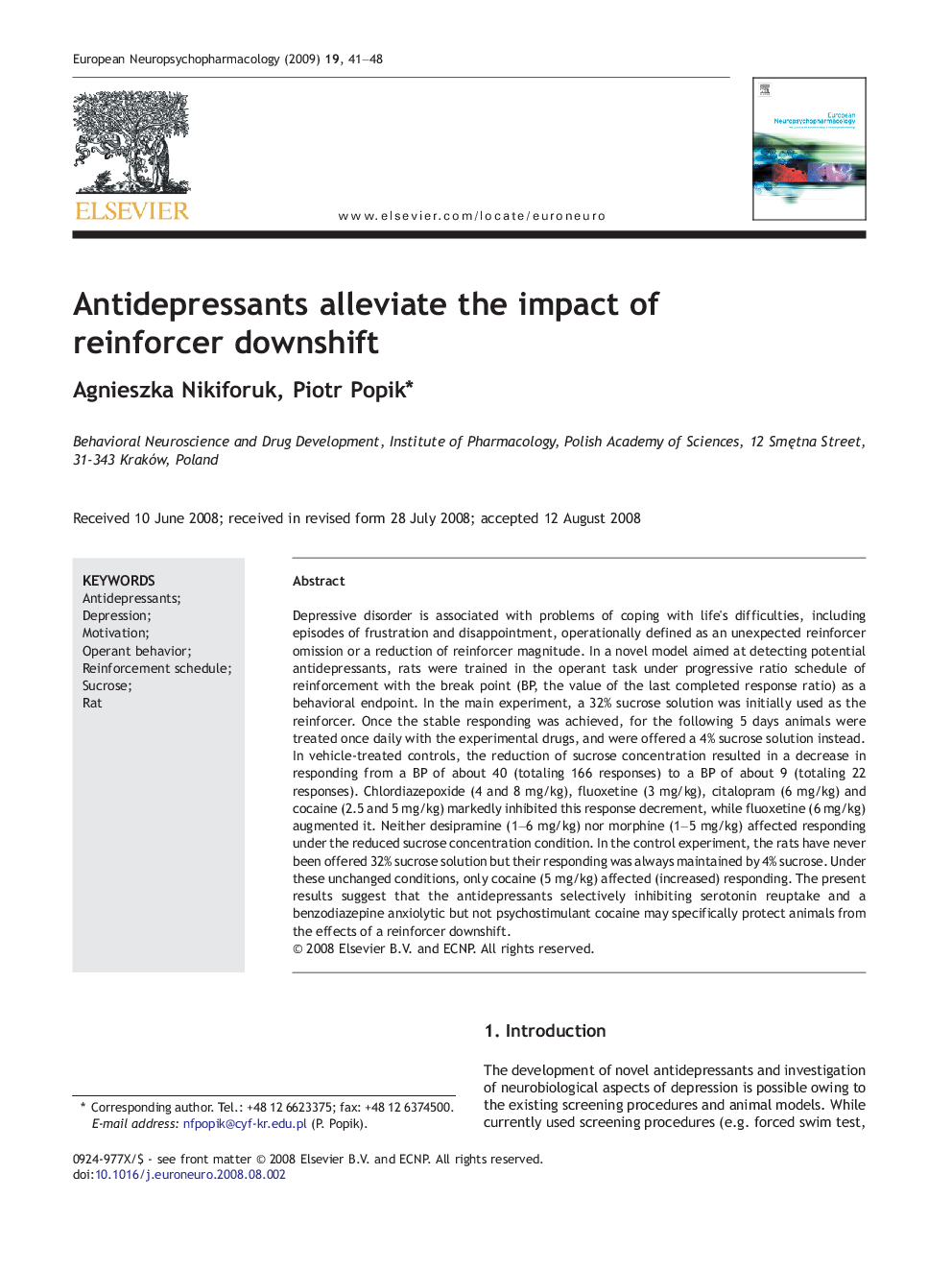| Article ID | Journal | Published Year | Pages | File Type |
|---|---|---|---|---|
| 319883 | European Neuropsychopharmacology | 2009 | 8 Pages |
Depressive disorder is associated with problems of coping with life's difficulties, including episodes of frustration and disappointment, operationally defined as an unexpected reinforcer omission or a reduction of reinforcer magnitude. In a novel model aimed at detecting potential antidepressants, rats were trained in the operant task under progressive ratio schedule of reinforcement with the break point (BP, the value of the last completed response ratio) as a behavioral endpoint. In the main experiment, a 32% sucrose solution was initially used as the reinforcer. Once the stable responding was achieved, for the following 5 days animals were treated once daily with the experimental drugs, and were offered a 4% sucrose solution instead. In vehicle-treated controls, the reduction of sucrose concentration resulted in a decrease in responding from a BP of about 40 (totaling 166 responses) to a BP of about 9 (totaling 22 responses). Chlordiazepoxide (4 and 8 mg/kg), fluoxetine (3 mg/kg), citalopram (6 mg/kg) and cocaine (2.5 and 5 mg/kg) markedly inhibited this response decrement, while fluoxetine (6 mg/kg) augmented it. Neither desipramine (1–6 mg/kg) nor morphine (1–5 mg/kg) affected responding under the reduced sucrose concentration condition. In the control experiment, the rats have never been offered 32% sucrose solution but their responding was always maintained by 4% sucrose. Under these unchanged conditions, only cocaine (5 mg/kg) affected (increased) responding. The present results suggest that the antidepressants selectively inhibiting serotonin reuptake and a benzodiazepine anxiolytic but not psychostimulant cocaine may specifically protect animals from the effects of a reinforcer downshift.
